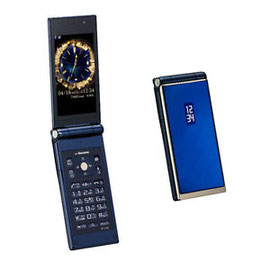
DoCoMo Mobile Phone Manuals PDF


DoCoMo Mobile Phones History
Some DoCoMo Mobile Phones User Manuals PDF are above the page.
The company Nippon Telegraph and Telephone Public Corporation was founded in 1952 by the state and monopolized the sphere of communication in the country. Naturally, at that time nothing was known about mobile telephony, and fixed phones were considered "entertainment for the rich", so a whole network of payphones quickly grew on the islands. They were installed not only on the streets, but also in public places (read restaurants and cafes), were extremely popular and soon formed around themselves a small cult (which the Japanese still need).
The main goal of creating NTT was to create a telephone network for the civilian population and in the first five years they coped with this. The equipment was supplied by AT & T,(PDF User Manuals page) and the Japanese used it effectively. But only until the early 1960s. The country began an industrial boom and American technology began to withdraw from use, replacing domestically. And in 1968 in Japan they launched a paging communication.
But the Japanese quickly got tired of wires and communication through "aunt" and already in the early 70's NTT (which was the only one responsible for communications in the country) began to "digitize" and by the end of the decade finished doing it. In 1979, the company launched the first-generation network in Tokyo. Five years, the Japanese had enough to cover the whole country. By the way, at the time of the launch of the first digital network, more than 90% of the population received fixed telephony.
A year after the introduction of 1G across the country, the state decided to spur the development of the telecom and announced the privatization of NTT. In fact, the company was divided according to the example of AT & T, but only the state still left some shares behind it.
But let's move directly to mobile telephony. In 1992, NTT decided to engage in cellular communications and created an operator NTT DoCoMo. And they decided - and what is there to actually pull and a year later launched into operation a 2G network. The guys could not be stopped - in three years, in 1996, NTT completely switched to the figure, in 1999 they pleased the subscribers with the improved WAP, which was called i-mode, and by 2001 they were the first to launch commercial 3G.
The operator reached such a level that even competitors began to partially use their networks to service subscribers. With LTE NTT not very lucky - the first to become Scandinavians, which did not prevent the Japanese in a year (in 2010) to launch a network in Tokyo.
Now NTT DoCoMo is the fourth world capitalization operator. And still one of the first who in his time turned the world of digital telephony.
Read - INTERMEC Mobile Phone Manuals & History.
